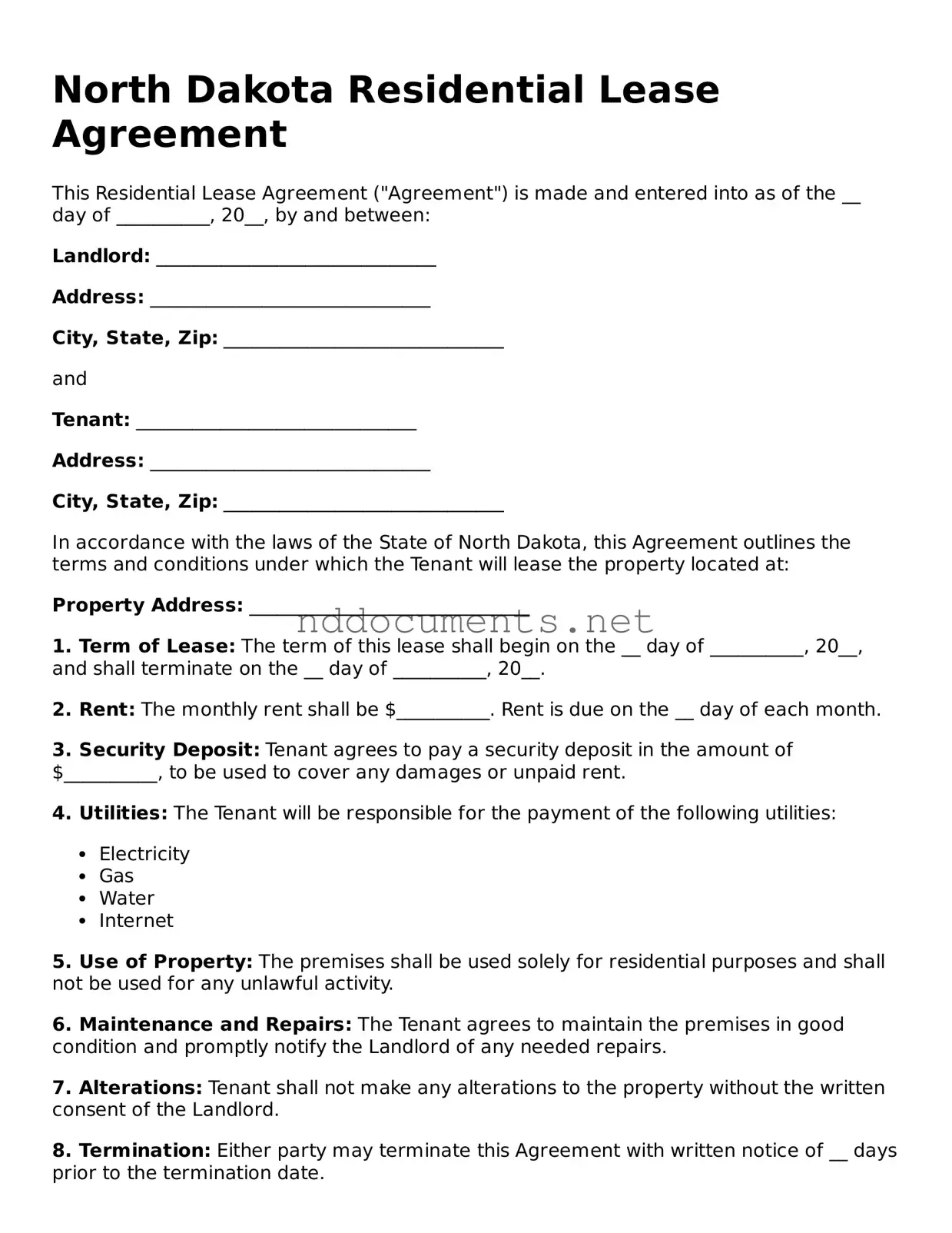Fillable Residential Lease Agreement Document for North Dakota
The North Dakota Residential Lease Agreement is a legally binding document that outlines the terms and conditions between a landlord and tenant for renting residential property. This agreement serves to protect the rights and responsibilities of both parties, ensuring a clear understanding of the rental arrangement. Familiarity with this form is essential for anyone involved in a rental situation in North Dakota.
Make Your Document Online
